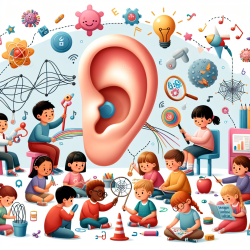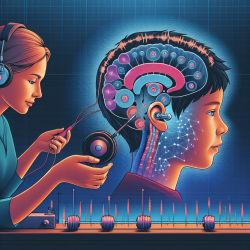As a Special Education Director with a passion for supporting the diverse needs of students, I am continually seeking innovative and research-based strategies to enhance language processing skills among children. The Processing Program: Using Language Webs and Altered Auditory Input to Improve Comprehension (2000) by Sandra McKinnis offers a comprehensive approach that has caught my attention. This program aims to facilitate the processing of linguistic concepts and improve comprehension through unique techniques. Here, I explore how practitioners can implement the outcomes of this research or be encouraged to delve further into this method.
Understanding The Processing Program
The Processing Program is designed to improve children's language processing skills, focusing on nouns, singular/plural noun inflection, and concepts of time, condition, quantity, and quality. It targets children with mild to profound difficulties in processing or learning language across three levels, catering to ages three to twelve. The program's foundation lies in two central features: Language Webs and the Altered Auditory Input (AAI) technique. Language Webs are frameworks that arrange target concepts incrementally, while AAI modifies the speed, pattern of pausing, and prosody of picture-pointing directions presented to a child.
Strategies for Practitioners
- Incremental Learning: Embrace the program's step-by-step approach to introduce new concepts alongside previously presented ones. This builds longer and more complex directions, enhancing the child's ability to process and comprehend instructions.
- Altered Auditory Input: Use the AAI technique to modify your speech pattern when presenting new concepts. Start with altering the speed, then introduce pauses, and finally, adjust prosody as the child's accuracy improves. This method is crucial for improving processing speed and efficiency.
- Engage in Direct Training: Consistent with the program's principles, provide multiple, direct training sessions. This approach is supported by research indicating neurophysical changes and improvements in language processing with intensive training.
- Collaborate with Communication Partners: Train parents and other communication partners in the AAI technique. Daily use by all of the child's communication partners can lead to more rapid improvements.
- Use as a Diagnostic Tool: Implement the program at the beginning of therapy sessions as a warm-up activity and a "mini" diagnostic tool to gauge the child's progress over time.
Benefits and Considerations
The Processing Program offers a highly structured nature, carefully sequenced concepts, and a wide variety of language concepts and vocabulary. It has the potential to serve a broad population of children with language processing difficulties. However, the number of parameters and the program's structured nature may pose challenges for first-time users. Practitioners are encouraged to familiarize themselves with the program's components and use the provided progress sheet to monitor the child's advancement.
Encouraging Further Research
While the program is based on strategies from clinical experience and recent research, formal clinical research on its efficacy is still needed. Practitioners are encouraged to explore the program's foundations, understand the research that influenced its design, and consider how it may be adapted or integrated into their practice. Engaging in further research or contributing to the body of evidence on the efficacy of The Processing Program can help refine our approaches to supporting children with language processing difficulties.
In conclusion, The Processing Program offers a structured, research-based approach to improving language processing skills in children. By implementing the strategies outlined in this program and engaging in further research, practitioners can enhance their skills and better support the diverse needs of their students. For those interested in exploring this program further and understanding its theoretical underpinnings, I highly recommend delving into the original research paper.
To read the original research paper, please follow this link: The Processing Program: Using Language Webs and Altered Auditory Input to Improve Comprehension (2000).










